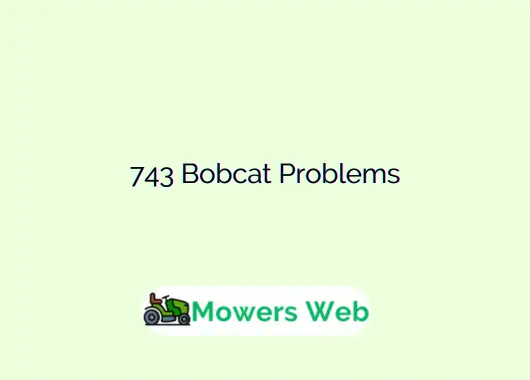In this post guide, we’ll explore the most common issues with the John Deere Buck 500, their causes, and practical solutions to keep your ATV running smoothly.
John Deere Buck 500 Problems
1. Electrical System Malfunctions
One of the most frequently reported issues with the John Deere Buck 500 involves its electrical system. Owners have noted problems such as faulty wiring, blown fuses, and non-functional instrument clusters, including speedometers and indicator lights.
For instance, a 2006 Buck 500 owner reported that the speedometer and taillights stopped working, suspecting a faulty relay in the ignition switch circuit. In some cases, the indicator lights remain on continuously, which can be confusing and indicate underlying electrical issues.
Causes:
- Exposure to Elements: The Buck 500’s handlebar switches and wiring are exposed to weather and UV damage, leading to degradation over time.
- Faulty Relays or Sensors: Relays, such as those controlling the instrument cluster, can fail, especially in older models. A malfunctioning engine temperature sensor or radiator sensor can also cause electrical issues.
- Poor Connections: Loose or corroded wiring connections can disrupt electrical flow, leading to system failures.
Solutions:
- Inspect and Secure Wiring: Regularly check wiring connections for corrosion or looseness and secure them to prevent malfunctions.
- Test Relays and Sensors: Use a digital multimeter to test relays and the engine temperature sensor. Replace faulty components with compatible parts, such as a standard “fog light” relay from an auto parts store, as one owner successfully did.
- Check Fuses: Replace blown fuses and ensure they are the correct rating to avoid further issues. If the problem persists, consult a service manual for detailed electrical diagnostics.
Related John Deere LT160 Problems(7 Common + Solutions)
2. Fuel System Troubles
Fuel-related problems are another common complaint among Buck 500 owners. These issues often manifest as difficulty starting the vehicle, stalling, or the engine shutting off when the choke is disengaged. For example, a 2005 Buck 500 owner reported that the ATV would only run with the choke partially engaged, indicating a fuel delivery issue.
Causes:
- Clogged Fuel Filters or Lines: Dirt or debris in the fuel system can block fuel filters or lines, starving the engine of fuel.
- Carburetor Issues: A dirty or clogged carburetor can prevent proper fuel-air mixture, leading to starting and idling problems.
- Fuel Tank Ventilation: A blocked vent in the gas tank cap can restrict fuel flow, causing the engine to stall.
Solutions:
- Clean or Replace Fuel Filters: Regularly inspect and replace clogged fuel filters to ensure proper fuel flow.
- Carburetor Maintenance: Clean the carburetor with a product like Seafoam, as one owner reported success after running it through the system. If cleaning doesn’t resolve the issue, consider rebuilding or replacing the carburetor.
- Check Fuel Tank Vent: Ensure the gas tank cap vent is clear to allow proper fuel flow. Replace the cap if necessary.
Related John Deere X350 Problems(7 Common + Solutions)
3. Transmission and Shifting Issues
Transmission problems, particularly with gear shifting, are a notable concern for Buck 500 owners. Some report the ATV getting stuck in a specific gear, such as first gear, or difficulty shifting between gears, especially when the engine is running.
A 2006 Buck 650 EX owner described the gear lever becoming stuck, requiring the engine to be turned off to shift.
Causes:
- High Idle Speed: An idle set too high can cause the transmission to bind, making shifting difficult.
- Worn Clutch or Drive Belt: A defective clutch or worn drive belt can prevent proper disengagement, leading to gear lockup.
- Low or Degraded Transmission Oil: Insufficient or poor-quality transmission oil can cause shifting issues.
Solutions:
- Adjust Idle Speed: Adjust the idle screw, located under the seat on the right side, to ensure the engine idles at the correct RPM. A lower idle can ease shifting.
- Inspect Clutch and Drive Belt: Check the clutch for proper disengagement and inspect the drive belt for wear. Replace if necessary.
- Maintain Transmission Oil: Regularly check and replace transmission oil to ensure smooth operation. Use the recommended oil type specified in the owner’s manual.
Related John Deere Power Reverser Transmission Problems(Fixed)
4. Starter and Compression Issues
Starter failures and compression-related problems are also reported with the Buck 500. Owners have noted that the starter may not spin despite receiving power, and some struggle with hard-to-pull manual starters due to high compression.
Causes:
- Faulty Starter: A worn or damaged starter motor can fail to engage, as seen in a 2005 Buck 500 case where a new starter resolved the issue.
- Compression Issues: High compression can make manual starting difficult, especially without a compression release mechanism.
- Battery or Cable Problems: A weak battery or poor cable connections can prevent the starter from functioning properly.
Solutions:
- Test and Replace Starter: Check the starter for power using a voltmeter. If it’s receiving 12 volts but not spinning, replace it with a compatible aftermarket starter, which can cost significantly less than OEM parts.
- Check Battery Voltage: Ensure the battery maintains at least 12 volts under load. Replace cables or the battery if voltage drops below 8 volts during starting.
- Compression Check: Perform a compression test to diagnose engine issues. If compression is too high, consult a service manual for valve adjustment procedures.
Related What Charges a Battery on a Riding Lawn Mower(Explained)
5. Overheating and Cooling System Problems
Overheating, often due to a malfunctioning cooling fan, is another issue reported by Buck 500 owners. The fan may fail to turn on, leading to engine overheating, especially during heavy use.
Causes:
- Faulty Radiator Sensor: A malfunctioning sensor at the radiator’s base can prevent the fan from activating.
- Wiring or Relay Issues: Damaged wiring or a faulty relay can disrupt the cooling system.
Solutions:
- Test Cooling System Components: Use a multimeter to check the radiator sensor and fan relay. Replace any faulty components.
- Manual Fan Switch: Some owners have installed a manual fan switch to run the fan continuously, bypassing sensor issues.
- Regular Maintenance: Flush and replace coolant regularly to maintain optimal cooling performance.
Related John Deere X380 Problems(8 Common + Solutions)
FAQs
What engine is in a John Deere Buck 500?
The John Deere Buck 500 is powered by a Rotax 498-cc, single-cylinder, four-stroke engine.
What is the top speed of the John Deere Buck 500?
The top speed of the John Deere Buck 500 is approximately 45-50 mph, depending on conditions and load.
Why did John Deere stop making ATVs?
John Deere discontinued ATVs around 2010 to focus on core agricultural equipment, citing market shifts and profitability.
How to start a John Deere 4-wheeler?
Turn the key to the “on” position, ensure the kill switch is off, pull the choke if cold, and press the electric start button or pull the manual starter.
What year did they make John Deere Buck?
The John Deere Buck was introduced in 2004 and produced through approximately 2006.
How much does a John Deere 500 weigh?
The John Deere Buck 500 has a dry weight of about 620 pounds (281 kg).
When did the John Deere 500 grain cart come out?
The John Deere 500 grain cart is not a standard model; however, John Deere introduced various grain cart models in the 1980s, with specific capacities like 500 bushels appearing in later years. Check with John Deere for exact release dates.
Final words
The John Deere Buck 500 is a reliable and versatile ATV, but like any vehicle, it has its share of issues. Electrical malfunctions, fuel system troubles, transmission problems, starter issues, and overheating are among the most common complaints.
Fortunately, most of these problems are fixable with regular maintenance and timely repairs.




